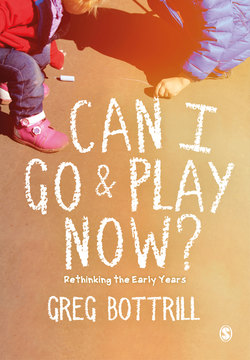Читать книгу Can I Go and Play Now? - Greg Bottrill - Страница 11
На сайте Литреса книга снята с продажи.
What is required for this approach to be successful?
ОглавлениеA simple word: faith. Faith in yourself, faith in your innate sense of what education really should be and, most importantly, faith in children.
Perhaps it would help if we focused on arguably one of Europe’s finest educational minds, Loris Malaguzzi, to enable us to switch our focus from outcome-driven and on to a child-driven pedagogy. Malaguzzi was a man who had real faith in young children – he saw them as citizens, as people who participated, who had thoughts, actions, dreams, imagination, all of which lie beyond the interpretation of the adult world. Emerging as a society from the aftermath of the Second World War, he began to set about defining an approach that would create a society that valued children and their education. He had a vision that children could be enabled to realise and express their own ideas along the principles of respect, responsibility and community, and could do so through being empowered to explore and discover via a curriculum that was essentially self-created and travelled through with the gentle and helping hands of adults.
His poem The Hundred Languages of Children beautifully sums up his vision of children, and I would challenge you to disagree with any of its sentiments:
The child
is made of one hundred.
The child has
a hundred languages
a hundred hands
a hundred thoughts
a hundred ways of thinking
of playing, of speaking.
A hundred always a hundred
ways of listening
of marveling, of loving
a hundred joys
for singing and understanding
a hundred worlds
to discover
a hundred worlds
to invent
a hundred worlds
to dream.
The child has
a hundred languages
(and a hundred hundred hundred more)
but they steal ninety-nine.
The school and the culture
separate the head from the body.
They tell the child:
to think without hands
to do without head
to listen and not to speak
to understand without joy
to love and to marvel
only at Easter and at Christmas.
They tell the child:
to discover the world already there
and of the hundred
they steal ninety-nine.
They tell the child:
that work and play
reality and fantasy
science and imagination
sky and earth
reason and dream
are things
that do not belong together.
And thus they tell the child
that the hundred is not there.
The child says:
No way. The hundred is there.
How true and how damning. The adult world seems perennially to want children to be seen and not heard, but the hundred is there in spite of this. We hear the hundred every day. Children want you to hear their joy, their representations of the world, their understanding, their delight, their inquisitiveness. Unfortunately, we are often guilty of not listening; of not taking heed; of not paying attention; of only truly having brain space for our own planned activity, our own impositions, our own pressures. And children soon learn that you aren’t listening. They soon discover that the adult world is detached from theirs, that they have to do what you want them to do, to jump through the hoop, to follow-the-leader, to tiptoe through the bluebells. Children’s marvel, their desire to invent and their dreams are nothing if they are denied the opportunity to be.
